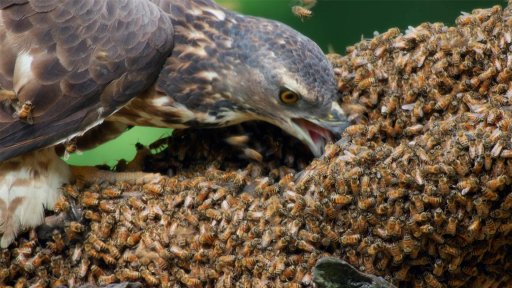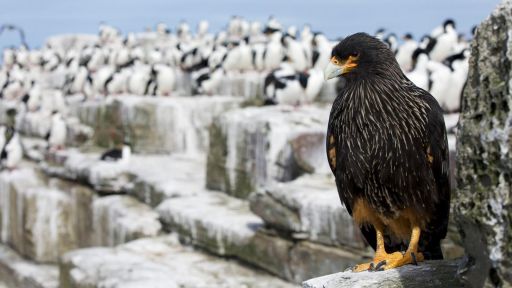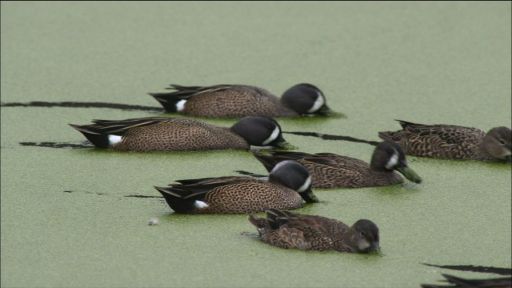When a young caracara comes across a penguin carcass guarded by older birds, he calls for backup from other young birds. Young caracaras stick together and join gangs for the first years of their lives.
Features



- [Narrator] A penguin carcass.
It's already taken.
Pairs of adult caracaras hold down territories across the island.
Lone youngsters don't stand a chance.
But there are other young birds around.
(birds squawking) He sends out a call to arms, (birds squawking) and a gang assembles.
(birds squawking) The adults respond, (birds squawking) though there's only one way this ends.
(birds squawking) The adults work to clear the area, (birds squawking) but are heavily outnumbered.
(birds squawking) It's impossible to keep up, (birds squawking) and the chaos attracts even more youngsters.
(birds squawking) Seizing their chance, they turn on the adults, (birds squawking) who have no choice but to fall back.
(birds squawking) Most birds of prey work alone.
But cast away on these remote islands, young carcaras stick together, (birds squawking) joining gangs for the first years of their lives.
(birds squawking) Social species are among the smartest of all animals.
(birds squawking)


